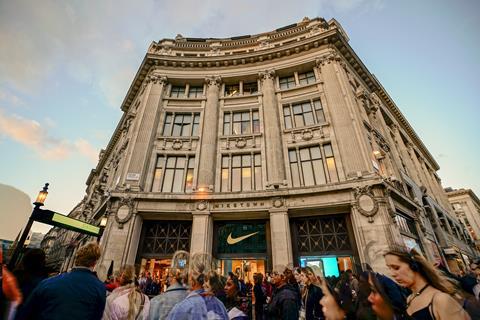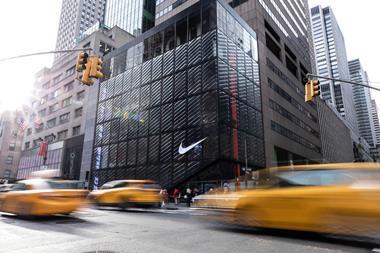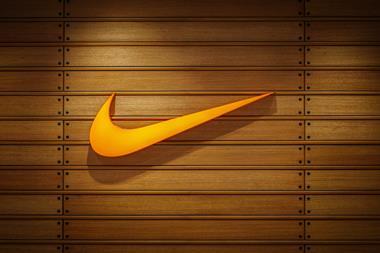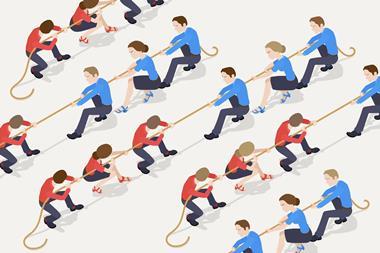With the news that Nike has decided to stop selling its products on Amazon, Retail Week looks at what repercussions that decision will have – for both businesses and the wider sector.
Last Wednesday, sportswear giant Nike confirmed it would be ending its two-year pilot with ecommerce monolith Amazon. Instead, the sportswear brand said it would be focusing more on selling direct to consumers.
It said: “As part of Nike’s focus on elevating consumer experiences through more direct, personal relationships, we have made the decision to complete our current pilot with Amazon Retail.
“We will continue to invest in strong, distinctive partnerships for Nike with other retailers and platforms to seamlessly serve our consumers globally.”
Nike has made no secret of its desire to sell more directly to its ever-burgeoning customer base, and in 2017 confirmed it would look to reduce its wholesale business by as much as 50%.
Mark Parker, the long-serving chief executive of Nike who has been the driving force behind the brand’s move to D2C, has announced he will be stepping down from the top job in the new year, to become executive chair. He is set to be replaced by technology guru John Donahoe, who will continue the strategic pivot.
While it’s one thing for Nike to stop supplying products to independent retailers, it’s another entirely to stop selling through Amazon – the largest online retailer in the world.
What does this shift mean for Nike, and will others follow suit?
Risk versus reward
According to figures from US-based market research company eMarketer released in the summer, Amazon sales will account for 37.7% of all online ecommerce in America this year.
With its seemingly limitless customer base and global reach, the potential rewards for retailers to stock products with Amazon are obvious. However, as head of industry insight at Eagle Eye Solutions Miya Knights points out, retailers also cede a lot of control when they sell through Amazon.
“The biggest advantages [for retailers] are that Amazon is easily accessible, has vast scale and reach,” she says. “The biggest potential disadvantages stem from the fact that Amazon’s services are built using proprietary technology and processes.
“This affords it more direct control over what levels of visibility and management sellers can have on its platform and using its services”.
Retailers also must share revenues and, ultimately, any profits they make selling through Amazon.
The level of control that Amazon has over its partners, combined with a growing D2C focus, would have played a key role in Nike’s decision, according to Vanessa Ruminski, VP of partnerships for US-based marketplace retailer SupplyKick.
“Giving Amazon the keys to manage its inventory and listings likely didn’t achieve the top customer service standards Nike expected”
Vanessa Ruminski, SupplyKick
“Nike has cut ties with Amazon largely because it’s focusing on elevating consumer experiences through more direct, personal relationships,” says Ruminski. “Giving Amazon the keys to manage its inventory and listings likely didn’t achieve the top customer service standards Nike expected.”
Knights agrees, saying that Amazon – like other service platform-providers such as Uber and Facebook – offers “a near neutral stance in areas such as brand compliance, counterfeits and pricing” – despite launching its Project Zero counterfeit programme in February this year.
In other words, Amazon effectively reserves the right to display and price other brand’s products as it sees fit. This runs completely counter to Nike’s ‘Consumer Direct Offense’ D2C strategy.
Managing director, luxury and fashion at Coresight Research, Marie Driscoll, says the move means that “over time consumers will realise that, for authentic Nike products, the best choice is Nike directly. It’s cleaning up its distribution”.
Nike’s decision is the culmination of a strategic shift years in the making. The brand is also going from strength to strength itself – its profits surpassed $1bn this year and its market valuation of $143bn makes it one of the 50 biggest businesses in the US.
It seems that other superbrands are looking to follow suit. Only yesterday, homewares colossus Ikea announced it too would be u-turning on a 2018 pilot it had with Amazon.
Can much smaller retailers afford to make the same decision?
Tip of the iceberg?

Former boss of email service provider AOL, Tim Armstrong, told CNBC last week that Nike’s decision was “the tip of the iceberg” for Amazon, as more brands will look to sell directly to consumers.
However, Coresight’s Driscoll says most smaller brands “feel they have to be on Amazon because the majority of product searches begin on Amazon” – referring to a 2016 piece of research by Bloomreach which found that 55% of all US consumers began their product searches on Amazon.
SupplyKick’s Ruminski agrees, saying most retailers and brands “simply don’t have the capacity and name recognition to pull off the platform entirely”.
While founder of NBK retail Natalie Berg says only the very largest brands, such as Nike, will have the “luxury of saying no” to Amazon, she does believe the ecommerce giant has made something of a rod for its own back.
“Amazon is at risk of becoming a victim of its own success,” says Berg. “Its marketplace model is designed to offer customers unrivalled choice, but with that comes growing concerns over counterfeits and algorithms that don’t necessarily give customers what they want.”
She also flags that, as Amazon continues to grow, it will increasingly come under “regulatory scrutiny” both at home in the US, and around the globe.
Ultimately, brands with the standing of Nike and Ikea are perfectly placed to prosper away from Amazon’s rules and regulations.
While the ecommerce giant’s ubiquity and scope mean that, for the vast majority of smaller brands, it remains an integral part of their sales and marketing channels – for the time being anyway.
However, as big brands increasingly look to interact directly with their customers, Amazon’s place at the pinnacle of the ecommerce ecosystem may begin to slip.


























No comments yet